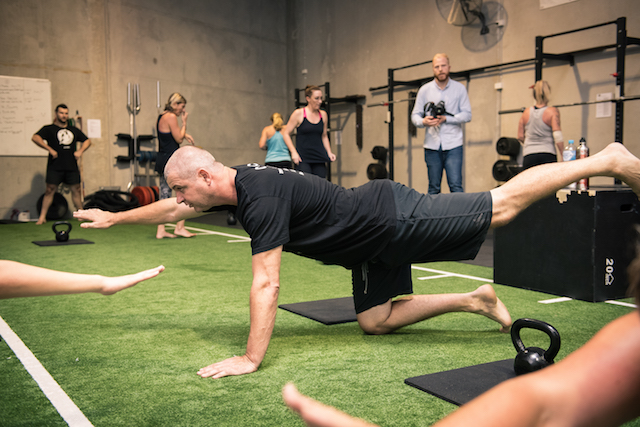
Are you suffering from poor ROM?
We have all seen athletes suffer either season-ending injuries or being sidelined by nagging pain and difficulties performing at a high level expected of them. From Tiger Woods – with his back issues to football players, basketball players and track and field athletes. They can all benefit from doing one thing.
A lot of their problems could have been avoided with proper warm-ups and using correct range of motion (ROM) when training.
In the same way, we as amateur exercisers must use correct form when doing our routines.
We may not notice the effects of poor body mechanics until well into the future when it may be too late to make the adjustments. And as a consequence, we end up having to endure unnecessary joint aches and pains. I will raise my hands to this problem. Lately I have been experiencing minor joint issues as a result of using improper form in the past.
What is Range Of Motion (ROM)
If you ever try to touch your toes and can only go so far . . . then you know the effects of being inflexible. Practicing range of motion exercises regularly will improve your flexibility and allow you to extend your body further than you currently can.
It means how far you can move your joints in different directions – such as reaching high overhead (shoulder joints) or reaching down to pick up your child (multiple joints).
Causes of poor Range of Motion
We develop problems with our flexibility in various ways. From an exercise standpoint – we may be using the wrong form when doing an exercise movement. Over time – months or even years – those improper movements will negatively affect the way we move and do certain functions.
It’s only when you make the correction that you notice the effects of improper range of motion. (This makes it doubly important to consult with a personal trainer before starting any workout program.)
Other causes of poor flexibility include . . .
- Living a sedentary lifestyle. For example, sitting at your desk for hours at a time which causes your knee joints to become stiff and inflexible.
- If you are ill for extended times, your muscles and joints get use to fewer movements.
- Muscle can get tight from training too hard.
- Injuries related to certain activities that can result in swelling or inflammation.
- As we age, we naturally become less flexible; we even get shorter since we start losing the compression in our spinal discs.
These are just a few of the issues that can lead to poor flexibility.
Benefits of proper ROM
By doing ROM exercises regularly we can maintain flexibility in spite of the causes listed above. Let’s look at some of the benefits of keeping our joints and muscles limber.
- This is excellent for rehabbing your body from the effects of medical procedures, injuries or various illness.
- By doing proper range of motion movements often . . . your circulation will improve.
- Injuries from over-exertion and poor stability are a problem many amateur exercisers experience. Doing a complete flexibility routine at least three days per week will improve your balance. It will also remind you of your limits as to how far you can push yourself.
- As we age, our muscle and joint strengths become even more important. Injuries from falls and bumps and bruises are a problem for the elderly. . . but by doing ROM regularly we can avoid most of these.
- Proper range of motion will help to restore normal movement after a hard training session.
- Arthritis is a joint ailment that usually attacks the elderly, but it’s becoming a regular occurence in young people today. By practicing range of motion exercises often you can avoid or delay being affected by it.
Make a schedule to do a complete flexibility program at least three days per week. It doesn’t have to be more than ten to fifteen minutes.
There are anywhere from 200 to 400 joints in our bodies depending on our age. We can’t exercise them all but by practicing regular ROM movements we can have a positive impact on most of them.
Keep in mind that we don’t get a full range of motion in our normal daily movements such as walking, sitting, standing, climbing the stairs, making breakfast in the morning, having sex, etc. It must be done in a methodical way to get the full benefits.
How to do ROM correctly
Visit the link below for my guide to doing a full stretching routine. Remember to start with easy movements and increase over time.
In addition to the ROM program I outline in the link above I have contracted with Mike Westerdal to offer you his best-selling guide on how to fix lower-body range of motion. This is the Key to Eliminating Joint & Back Pain and anxiety due poor body movements.
